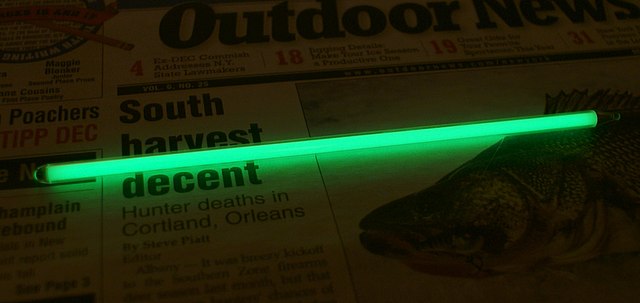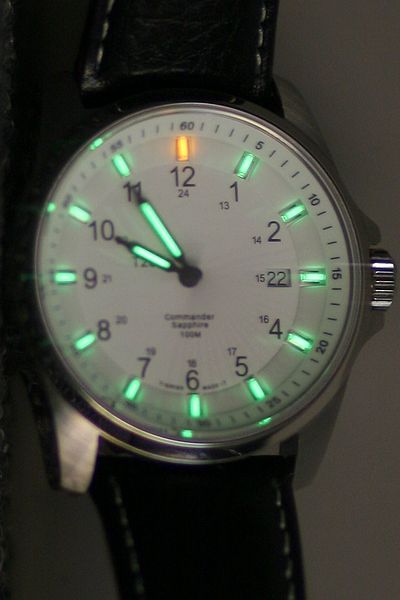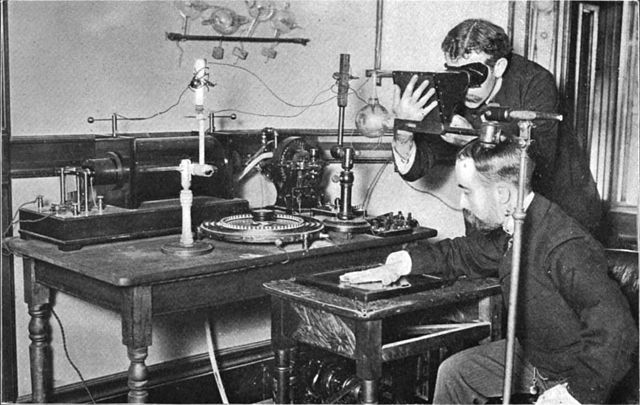Tritium or hydrogen-3 is a rare and radioactive isotope of hydrogen with half-life ~12.3 years. The nucleus of tritium contains one proton and two neutrons, whereas the nucleus of the common isotope hydrogen-1 (protium) contains one proton and zero neutrons, and that of a non-radioactive hydrogen-2 (deuterium) contains one proton and one neutron.
Radioluminescent 1.8 curies (67 GBq) 6 by 0.2 inches (152.4 mm × 5.1 mm) tritium vials are thin, tritium-gas-filled glass vials whose inner surfaces are coated with a phosphor. The vial shown here is brand-new.
Swiss Military watch with tritium-illuminated face
Radioactive decay is the process by which an unstable atomic nucleus loses energy by radiation. A material containing unstable nuclei is considered radioactive. Three of the most common types of decay are alpha, beta, and gamma decay. The weak force is the mechanism that is responsible for beta decay, while the other two are governed by the electromagnetism and nuclear force.
Pierre and Marie Curie in their Paris laboratory, before 1907
Taking an X-ray image with early Crookes tube apparatus in 1896. The Crookes tube is visible in the centre. The standing man is viewing his hand with a fluoroscope screen; this was a common way of setting up the tube. No precautions against radiation exposure are being taken; its hazards were not known at the time.




